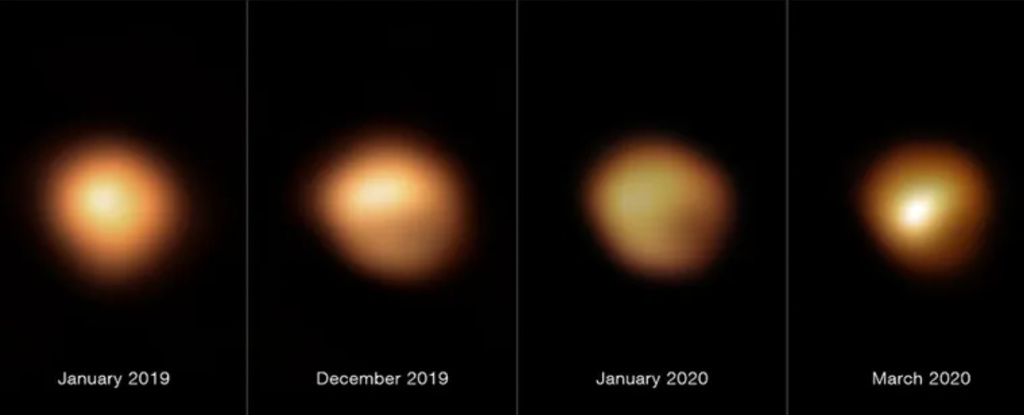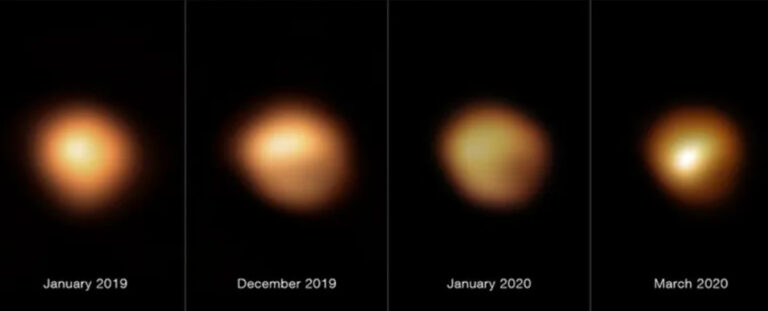New Insights into Betelgeuse’s ‘Great Dimming’ Revealed by 15 Years of Data
Orion the hunter is a constellation that is easily recognizable to those who frequently observe the night sky. Unlike other constellations that bear abstract resemblances, Orion actually resembles a hunter. Among its prominent stars is Betelgeuse, which made headlines in 2020 when it dimmed to a historically low level. A team of astronomers has been conducting a study on this fascinating event, yielding intriguing results.
Betelgeuse is a red supergiant star located approximately 650 light-years away from Earth. Its immense radius of 617 million kilometers is so vast that if it were positioned in place of the Sun, the Earth’s orbit would be deeply embedded within its layers.This star is also classified as a variable star, meaning it exhibits fluctuations in its light output. In the case of Betelgeuse, its variability is semi-regular, displaying a consistent pattern with occasional irregularities.
The star’s variability is attributed to pulsations in its radius, occurring over a span of approximately 400 days. Additionally, there is a longer period of variability, lasting around 2,100 days, whose origin remains uncertain but may be linked to variations in convective flow.
In 2020, Betelgeuse experienced an unprecedented dimming event, now referred to as the “Great Dimming.” Its visual brightness, or magnitude, dropped by 1.6. However, the dimming did not occur uniformly across the star’s sphere; the southern hemisphere appeared significantly darker than the northern. Numerous theories have been proposed to explain this extraordinary occurrence.

In a recent publication in Astronomy and Astrophysics, a group of astronomers led by Daniel Jadlovský delves into the Great Dimming event by utilizing 15 years of data from the STELLA robotic telescope.The STELLA system consists of two robotic telescopes located in Spain, along with a high resolution spectrograph and a wide field imager.
By utilizing this data, the team was able to thoroughly examine the visible layer of Betelgeuse, known as the photosphere, with remarkable precision. This allowed them to gain valuable insights into the radial pulsations, shockwaves, and how they propagated through the various layers of the photosphere.
Through the implementation of the tomographic technique, the team successfully identified five distinct layers within the photosphere. This technique involves constructing images from a series of projections.Upon analysis, it was discovered that the variations observed in the innermost photospheric layer, referred to as C1, aligned with the timescales of the changes in visual magnitude.
The brightness variations appeared to be in accordance with the shockwaves propagating through the layers. The data from the Great Dimming event of 2020 revealed the presence of two strong shockwaves in the photosphere. The first shockwave likely triggered a substantial release of material, resulting in an inward flow across all layers. Subsequently, as the inward flow reached its maximum velocity, a second, more powerful shockwave occurred, causing a significant outward flow of material. It is important to note that these events did not occur simultaneously across all photospheric layers. It took until early 2022 for Betelgeuse to stabilize once again.
This article is republished from sciencealert under a Creative Commons license. Read the original article.
Do not forget to share your opinion with us to provide you with the best posts !




0 Comments